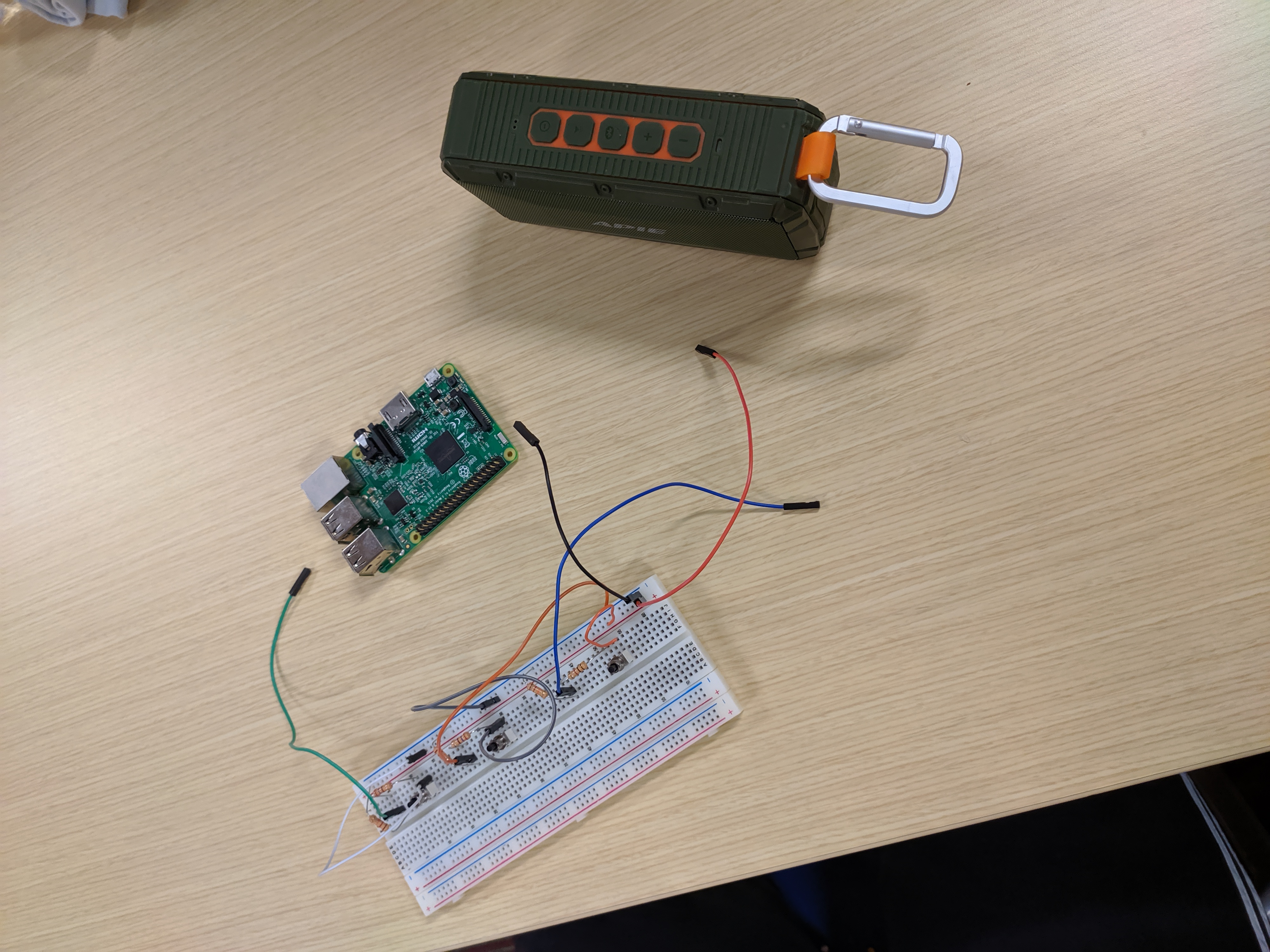When Life Gives You Lemons... Make Raspberry Pi!

Description as a Tweet:
A gadget that randomly plays out the audio of some of the most iconic vines of our generation based on the 3 facets of human emotion: sad, happy, and neutral. Because while Vine is dead, so are our emotions.
Inspiration:
Our deep and profound love of the now-defunct video-sharing service Vine. RIP Vine, you will never be forgotten.
What it does:
With our project, the user is given a choice to press one of three buttons, each of which are meant to represent a certain mood. The speaker connected to our project then randomly plays out the audio of one of the vines we chose to represent each mood category. The user is able to repeat this as many times as desired.
How we built it:
First, we got a raspberry pi in order to create a bridge from hardware to software. Then, we got some jumpers and wired the pi to the circuit. Buttons were added to the circuit along with the resistors to create an interactive piece. Afterward, we connected a speaker to the pi via an aux cord.
As for the software, we flashed Raspbian onto a micro SD card and inserted it into the Raspberry Pi. We then proceeded to connect it to a monitor and then opened Mu to code out the processes of our gadget in Python. We downloaded the vine audio in wav files to implement into our code. We then coded our software. After the coding and debugging were done, we ran the software to make sure the hardware and software were working properly together.
Technologies we used:
- Python
- Raspberry Pi
Challenges we ran into:
Initially, the audio was not working and the wiring connections were not fully stable. We also ran into problems due to a lack of necessary supplies, such as a micro-HDMI to HDMI cable, a USB or wireless keyboard (causing us to use VNC to run the pi on one of our laptops), and a laptop with an ethernet cable.
Accomplishments we're proud of:
We are most proud of the great amount of knowledge and skills we gained throughout the course of our project, and how, despite being a relatively inexperienced freshman, we managed to create a working project.
What we've learned:
We learned the basics of using a raspberry pi, including how to code it, attach hardware to it and make a successful product.
What's next:
We plan to add more vines and add a video display.
Built with:
We built it with resistors, wires, jumpers, buttons, a speaker, a breadboard, a laptop, and a monitor.
Prizes we're going for:
- Funniest Hack
Team Members
Srija Nagireddy
Jessica Peters
Eesha Arabhavi
